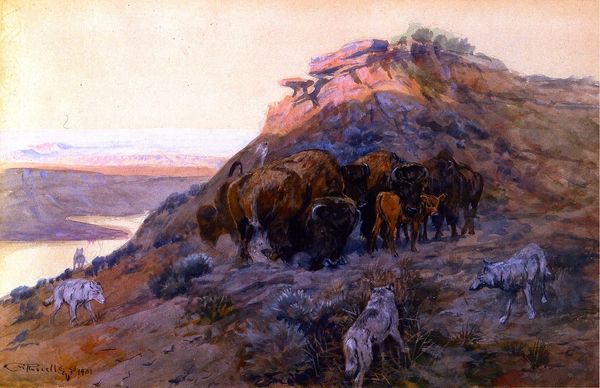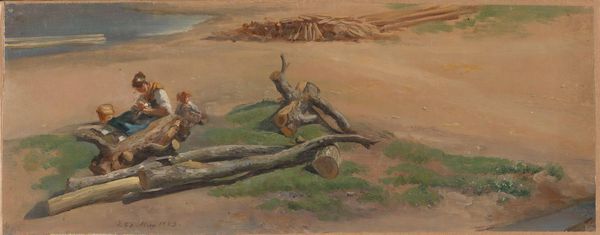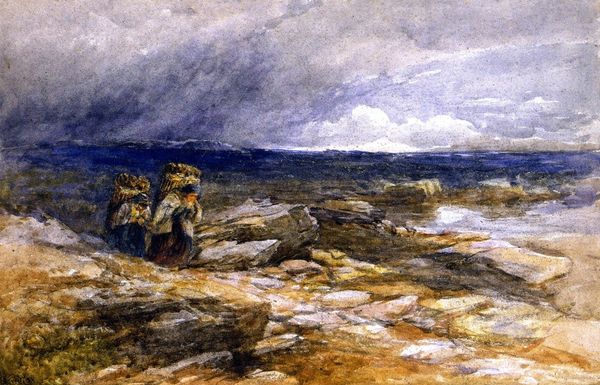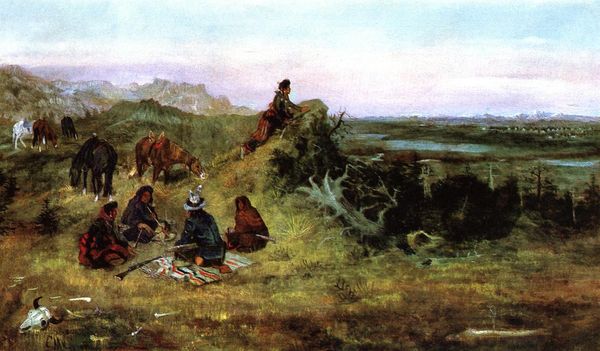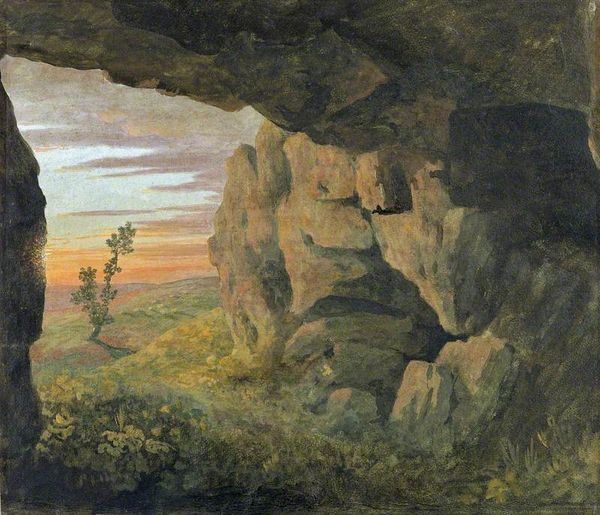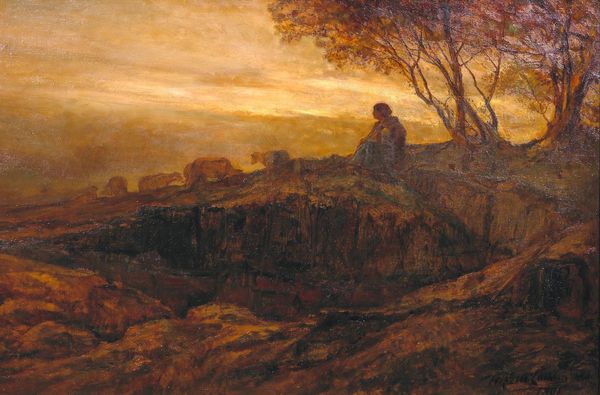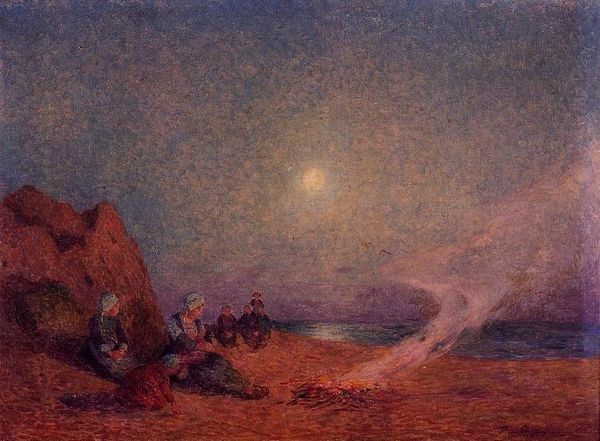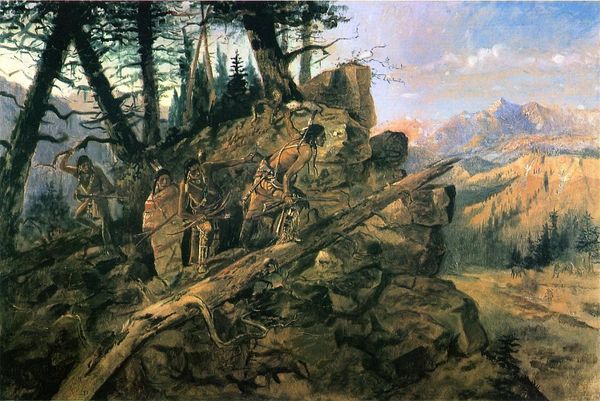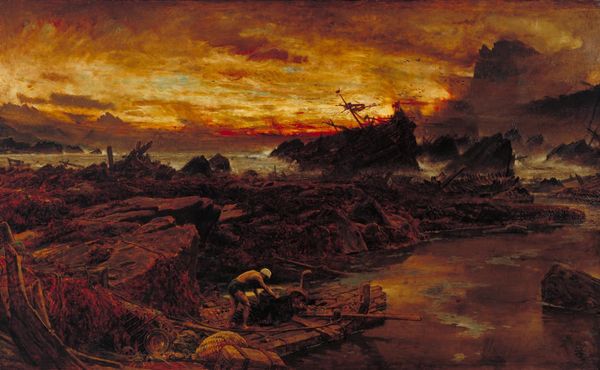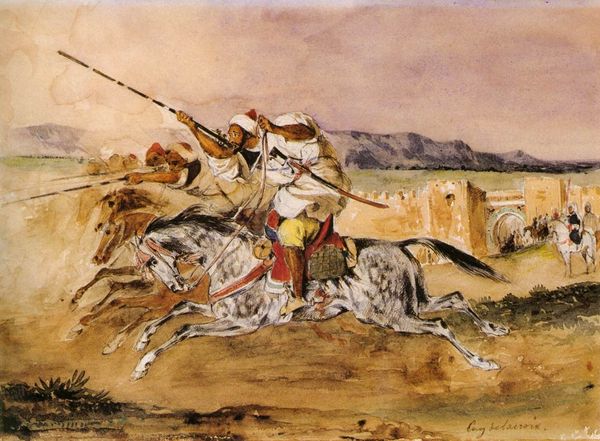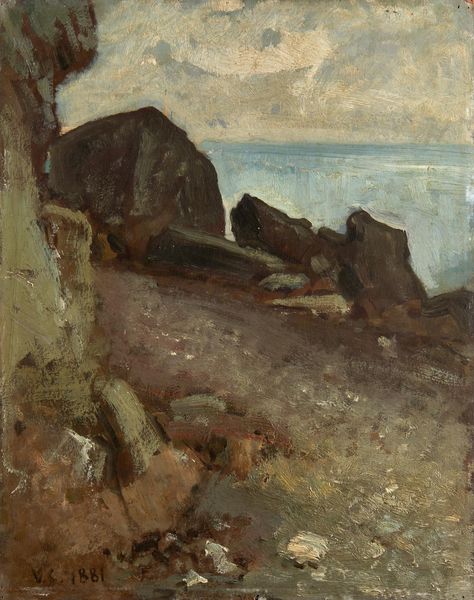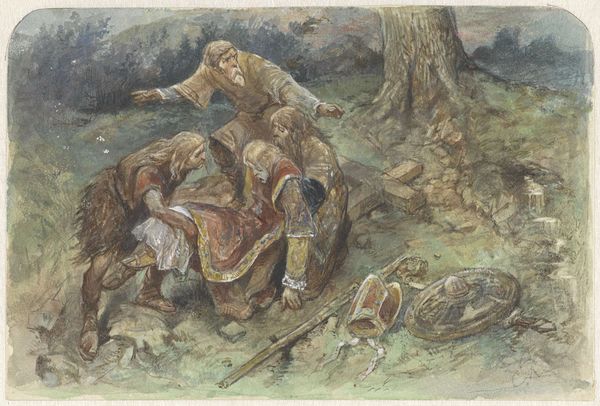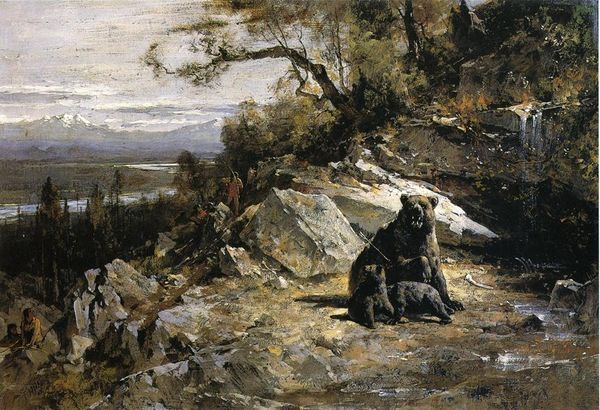
Copyright: Public domain
Curator: Here we see Charles M. Russell's "Mourning Her Warrior Dead" from 1899, rendered delicately in watercolor. Editor: The desolation is immediate. The entire scene is muted, as if grief has leached the color from the world, highlighting the raw rock and worn artifacts surrounding the grieving woman. Curator: Russell often engaged with romanticized depictions of the American West, but pieces like this offer a poignant perspective on loss within Indigenous communities affected by westward expansion. Editor: Note the woman’s bowed posture and the subtle details of her clothing and possessions. Her stance is compelling in her despair, emphasizing the harsh reality faced by her community—but also notice how the materiality of her shawl or the warrior's shield seem aged and distressed through his handling of the watercolor medium. Curator: Absolutely, the piece powerfully encapsulates both personal sorrow and broader cultural devastation. The solitary figure echoes the isolation and cultural dispossession experienced by Native Americans. The sky and muted colors reflect the bleak political climate of the late 19th century and government policy towards native people. Editor: And what about the labor invested here? The careful handling of the watercolor medium itself? What does this say about our consumption of art objects versus the weight of history? Curator: The application of watercolor seems apt in capturing a fragile cultural reality. It gives the scene a soft transient and ethereal quality, making it that more sorrowful as if she could fade away at any moment. We see a cultural crossroads and the deep scars of historical violence played out on a single life. Editor: I see now how this depiction can connect to broader stories of trauma and resistance from intersectional perspectives. What are our responsibilities to recognize such artistic records that confront social inequality and amplify the voices of the oppressed? Curator: Precisely. Viewing art this way compels us to understand that a romantic vision is more complex than we initially thought and leads us to a better recognition of diverse stories and the voices behind those narratives. Editor: Thanks. It makes me see even the landscape anew!
Comments
No comments
Be the first to comment and join the conversation on the ultimate creative platform.
